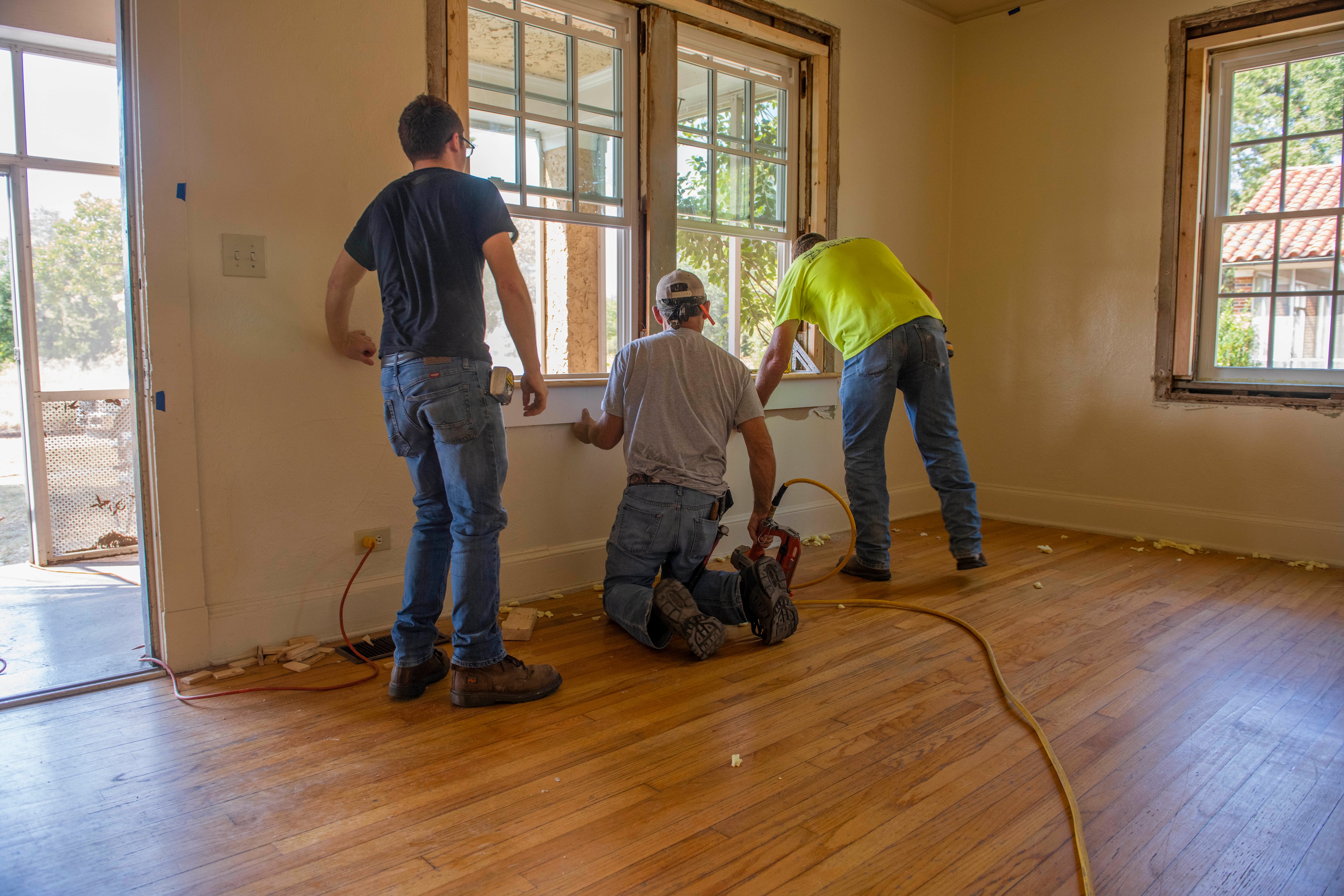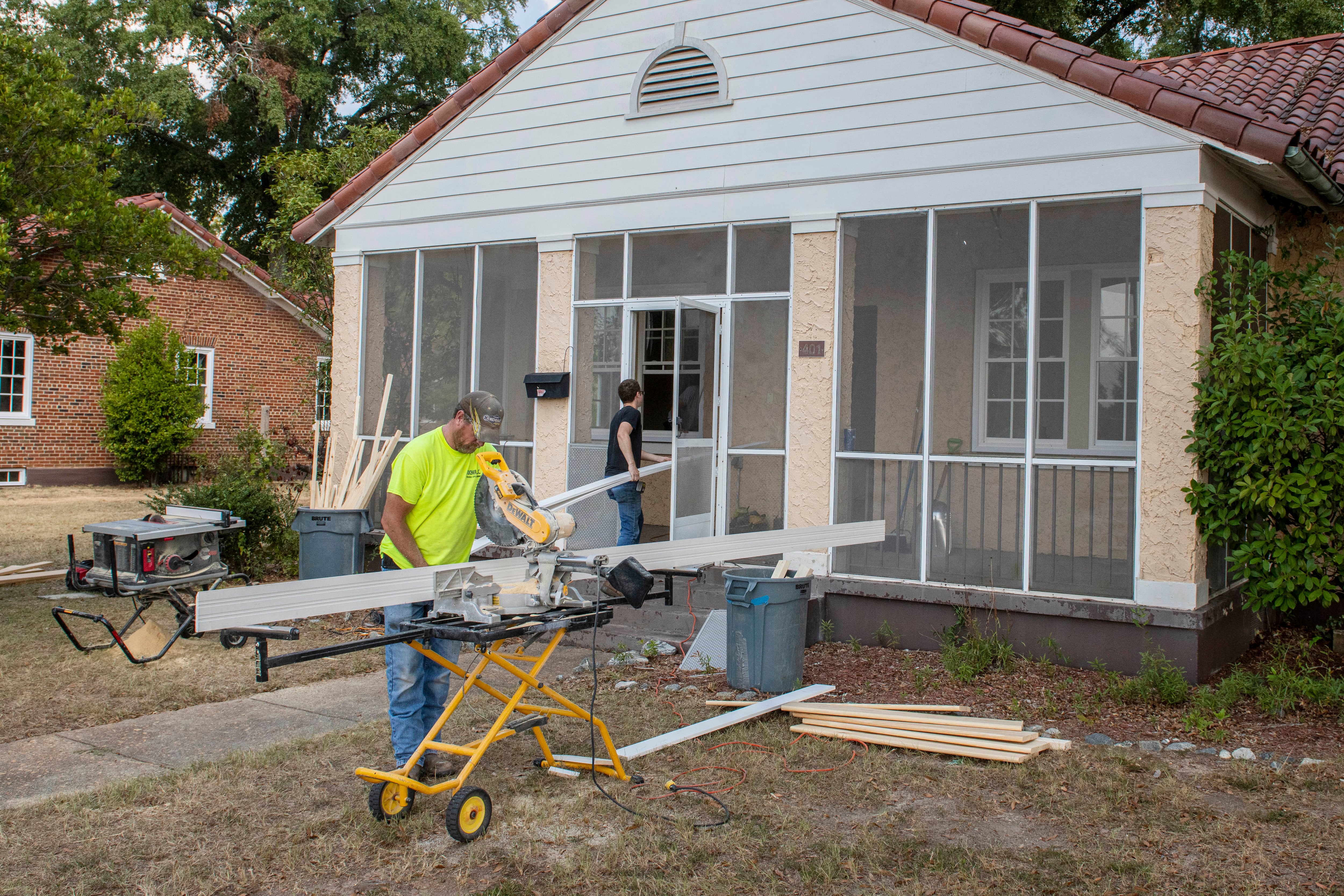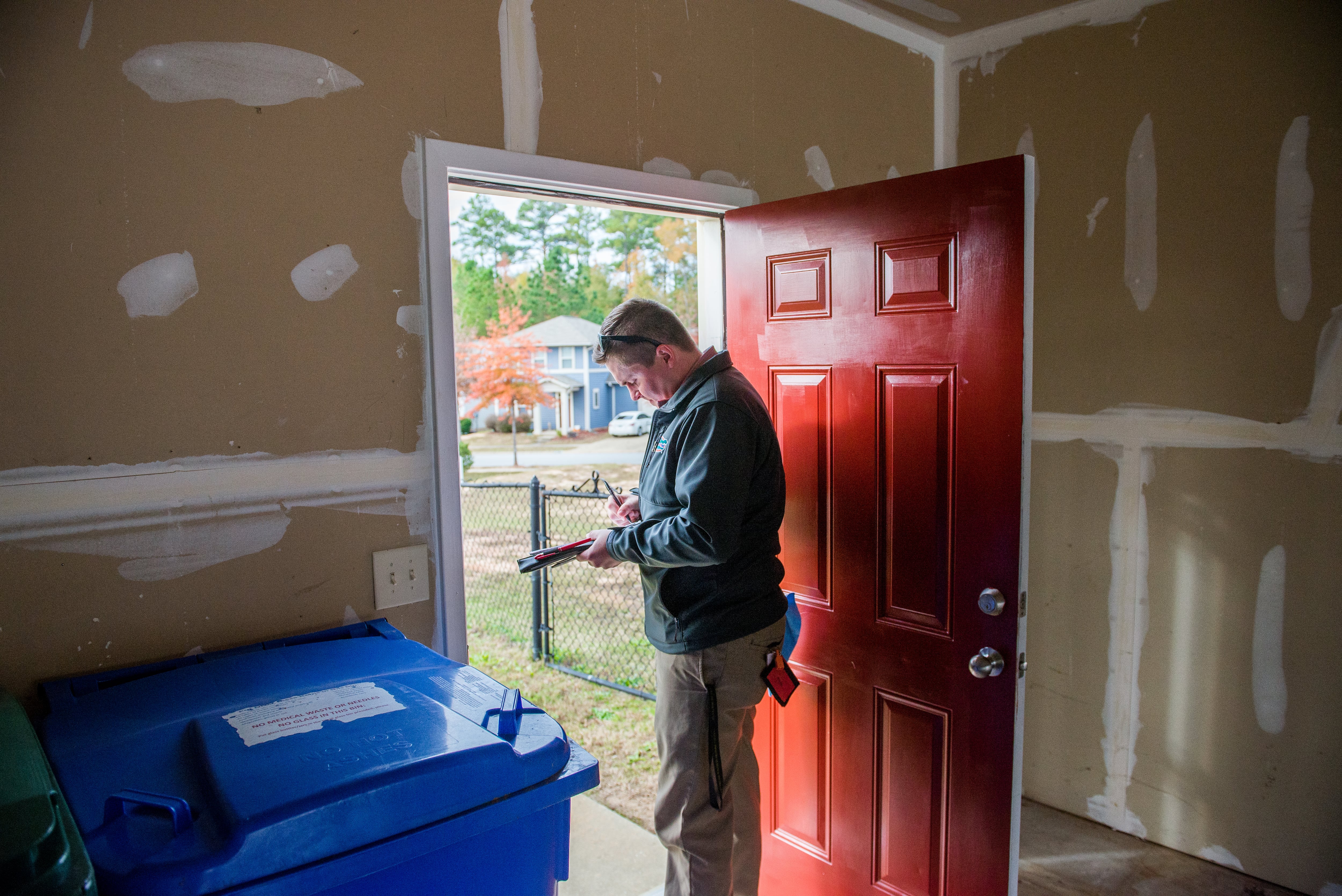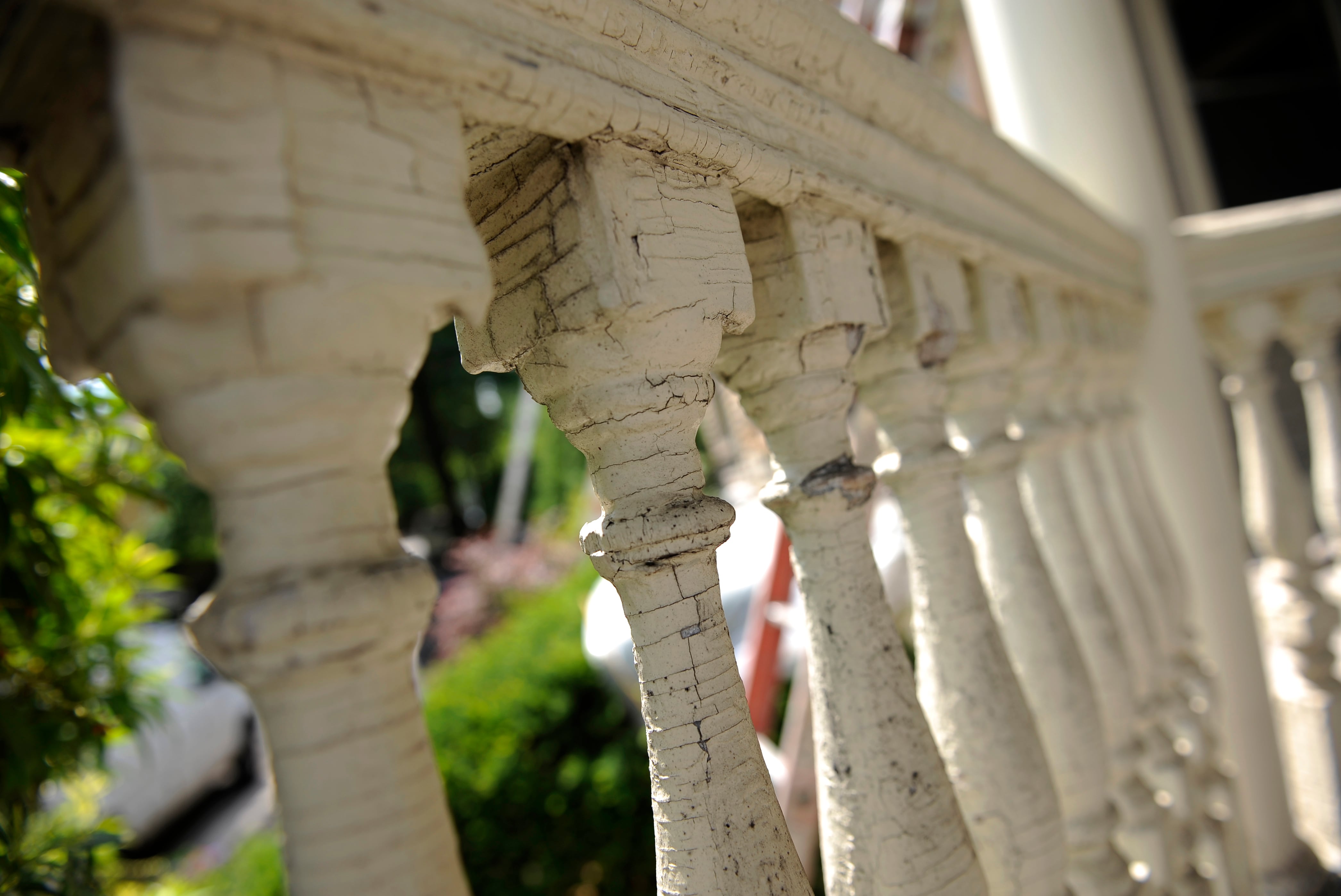The Army’s internal auditors recently concluded that the service has failed to ensure that privatized on-base homes with lead-based paint or asbestos are “safe for Army families,” according to an August 2023 report exclusively obtained by Army Times via the Freedom of Information Act.
The report, based on an Army Audit Agency study, said that the Army’s revamped housing inspection program, established in 2020, has lacked “effective oversight.” The study reviewed inspections of 201 homes built before 1978 — when lead-based paint and asbestos materials were banned from use in new homes — at three installations: Fort Cavazos, Texas; Fort Liberty, North Carolina; and Joint Base Lewis-McChord, Washington.
“Army housing office personnel didn’t ensure all assessments were done and documented to certify that homes with lead-based paint and asbestos-containing material were habitable,” the agency found. “This occurred primarily because Army housing supervisors didn’t provide effective oversight.”
None of the reviewed homes had received advanced lead paint risk assessments due to disagreements about who would foot the bill. More than two in five, or 41%, had no documented survey identifying the home’s asbestos risk areas.
Of 155 homes that had tenant changes, more than three quarters — 78% — had no documented lead-based paint visual inspection to identify areas of chipping or peeling lead paint that could pose an immediate health risk to the home’s next family, and virtually none of the homes had a properly completed quality assurance pre-move inspection checklist. Auditors said they couldn’t verify action was taken on 14 homes where lead paint problems were annotated, either.
Army spokesperson Matt Ahearn told Army Times that the service — which formally agreed with the audit’s findings — is taking steps to address the program’s shortcomings. He added that the Army is committed to furnishing “safe, quality housing.”
Ahearn said officials will “refresh” the housing inspector training“to ensure installations with privatized housing are completing everything that is required by the housing oversight program,” in addition to establishing a “review process” to ensure that quality control inspections occur.
Advocates and a lawmaker who reviewed the report’s findings said they were appalled.
Rep. Marilyn Strickland, D-Wash., represents JBLM and sits on the House Armed Services Committee’s quality of life panel. In a phone interview, she said that she and her colleagues have focused largely on the cost and supply of housing for military families, but added, “This particular issue around lead paint has not really been daylighted.”

Strickland said she intends to learn more “from our private [housing] providers about...the barriers to making good on this,” as well as explore “accountability and enforcement” tools to ensure compliance from both the privatized housing companies and the Army.
“If we don’t address these quality of life issues, it’s going to have an impact on recruiting down the road,” Strickland warned. “Yes, this is about health, and safety, and well-being and the quality of housing, but it’s also a much bigger issue as well.”
Army spouse Breanna Barnhart, one of the non-profit Safe Military Housing Initiative’s leaders, told Army Times that her advocacy work has helped her family “progressively come to terms” with the lead poisoning her daughter experienced while living on-base at JBLM.
Barnhart argued that recent military housing reforms, including a much-ballyhooed resident bill of rights, haven’t addressed what she believes to be the underlying problem — military officials are hesitant to aggressively punish non-performing privatized housing partners because of the structure of the joint public-private ventures.
Approximately 99% of the military’s domestic on-base family housing is administered by private companies with military assistance through public-private ventures that sought to revitalize crumbling neighborhoods in the mid-1990s. These projects are run by 14 companies that have consolidated ownership of military housing.
Ahearn, the Army spokesperson, said that 30% of the contractors’ quarterly compensation is “incentivized and...tied to conducting quality control and passing quality assurance inspections.”
“What, if anything, is going to be done about the fact that there isn’t follow through for these accountability measures?” Barnhart said. “There aren’t [proper] home inspections happening. The mission starts at home. If our soldiers are worried about their families, their head isn’t on the mission.”
Untrained inspectors, inadequate oversight
According to the audit, Army Installation Management Command “established this housing oversight program,” but it failed to monitor “whether installations were following it.”

The program was established in the wake of a wave of media reports and congressional oversight actions in the late 2010s that revealed, among other things, that the military was largely unaware of whether its older on-base homes posed risks to the troops and families who occupied them. The Army tested most of its privatized homes for lead-based paint, the audit confirmed, but that’s only half the battle.
Once a home was confirmed or presumed to have lead-based paint, the new protocol directed Army housing office officials to routinely inspect all painted surfaces in the home for peeling and cracking paint. After a family moves out and before a new family moves in, the housing company does an initial inspection, which the Army follows with a quality assurance inspection.
Under the new program, homes with damaged paint cannot receive new tenants until the problem is assessed and addressed, if necessary. In response to questions for this story, the Army said that approximately 95% of homes pass both inspections, but it’s not clear whether that number included homes that the auditors said had improperly documented inspections.
Lead-based paint is most dangerous to children, according to the Centers for Disease Control and Prevention. When lead paint deteriorates, it crumbles into paint chips and dust that children can ingest by putting their mouths on surfaces like window sills or doorframes — or even by simply breathing. Children exposed to lead often suffer brain and nervous system damage, leading to developmental delays, lower intelligence or even permanent disability if severe enough or untreated.
Inadequate and incomplete training contributed to Army housing office inspectors’ collective failure to complete more than three-quarters of the required visual quality assurance assessments, auditors said.
At the audited installations, nine out of 24 Army housing office inspectors failed to complete lead-based paint visual inspection training required by Installation Management Command headquarters, the report said. Local housing officials also told auditors that “the training received wasn’t very helpful,” so they didn’t understand how to properly complete and document the visual inspections.
Housing offices at two of the three installations — Fort Cavazos and JBLM — “didn’t fully understand” their quality assurance duty, according to the report.
At Fort Cavazos, this meant a home with chipped lead paint in the bathroom was “approved for occupancy” instead of receiving remediation. Its housing office completed only three of 58 required lead paint visual assessments.
Meanwhile, auditors reported that JBLM “only started completing these assessments in May 2022 — right after we started the audit.”
Yet even when the Army properly completed visual assessments of lead-based paint, the next step prescribed in Army policy — a lead-based paint risk assessment — did not occur for a single home in the study. The assessments aim to guide interim repair and permanent remediation efforts.
But who will foot the bill?
Army housing offices don’t staff the certified lead hazard inspectors required to conduct such assessments, and privatized housing corporations balked at the requirement due to the cost and availability of trained inspectors. Such an assessment usually costs between $2,000 and $3,000, according to the report.
Liberty Military Housing, which administers more than 5,000 homes at JBLM, told auditors that the lead paint risk assessment requirement was not listed in any of the documents governing their partnership with the Army. Nor was it formally requested via other means, they said.
Auditors highlighted this as a critical point of failure — the Army’s internal program guidance “makes the privatized partner … responsible for LBP risk assessments. However, the program isn’t automatically applicable to a privatized housing partner unless the relevant legal agreements between the Army and the partner incorporate this guidance.”
Reached by Army Times, Liberty’s senior vice president of construction and environmental services, Kevin Clarke said in an emailed statement that the audit was “not an assessment of Liberty nor the quality of housing that we offer to military families.”
Clarke said that the Army’s inspection guidance, which she claimed “the Army plans to withdraw,” was not communicated to the company before the audit began. He also argued that the company’s existing lead and asbestos mitigation policies, which include its own inspection regimes and training for maintenance employees, prove that it is “vigilant about ensuring that our homes are safe for military families.”
“The Army’s internal guidance goes beyond EPA standards and would cause a major disruption in our ability to house military families. One major barrier is the limited number of consultants who have the certifications needed to conduct lead assessments,” Clarke said. “The limited consultants would lead to even greater wait times for military families in an already highly impacted area for housing shortages and waitlist times.”

Auditors also highlighted the poor documentation of asbestos surveys, which tell maintenance officials and tenants which portions of the home pose health hazards if disturbed. One in five pre-1978 homes at JBLM lacked asbestos surveys, according to the report.
Solving the problem
Clarke warned that making privatized housing partners provide the lead paint assessments could take money away from other priorities. The company recently announced $120 million in renovations to its East Coast communities.
“The additional funding required to implement a policy such as this would take funding from essential renovations and improvement projects in the communities,” he said.
Strickland, the Washington congresswoman, said she believes solving the problem needs to be a collaborative venture, likely handled under the auspices of Congress.
“I would look at this as an opportunity to bring all the partners together — and not [for] finger pointing — and just saying, ‘What in this ecosystem is not working to make sure that we are addressing the lead paint?’” she said. “‘What are the barriers to doing this? How do we address the barriers, and how do we make sure that we have housing that is safe and habitable, in addition to addressing our housing supply?’”
The congresswoman acknowledged potential funding constraints, but insisted that lawmakers and other stakeholders must find a path forward.
“We know that we have resource constraints,” Strickland said. “Let’s not make excuses for what we’re not doing. Let’s talk about the plan moving forward to actually do something and address some of the structural problems.”
Military Times military families editor Karen Jowers contributed to this report.
Davis Winkie covers the Army for Military Times. He studied history at Vanderbilt and UNC-Chapel Hill, and served five years in the Army Guard. His investigations earned the Society of Professional Journalists' 2023 Sunshine Award and consecutive Military Reporters and Editors honors, among others. Davis was also a 2022 Livingston Awards finalist.





